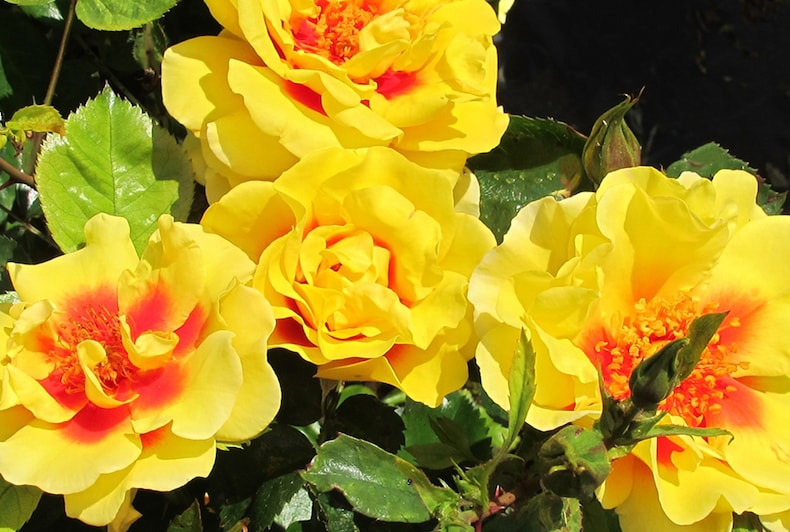Roses are one of the nation’s most popular plants and are regularly voted Britain’s favourite flower. The perfect choice for creating a romantic cottage garden or adding scent and colour to a modern scheme, roses are admired for their form, fragrance and foliage.
Whether you prefer bush roses, standards or climbing roses, it’s easy to incorporate this beautiful flower into any sized garden. Thriving in sun or partial shade, they make stunning cut flowers too. Here’s our horticultural team’s advice on planting your bare roots along with ten special varieties to try…
Visit our collection of rose plants to find your favourite.
When should you plant bare-root roses?
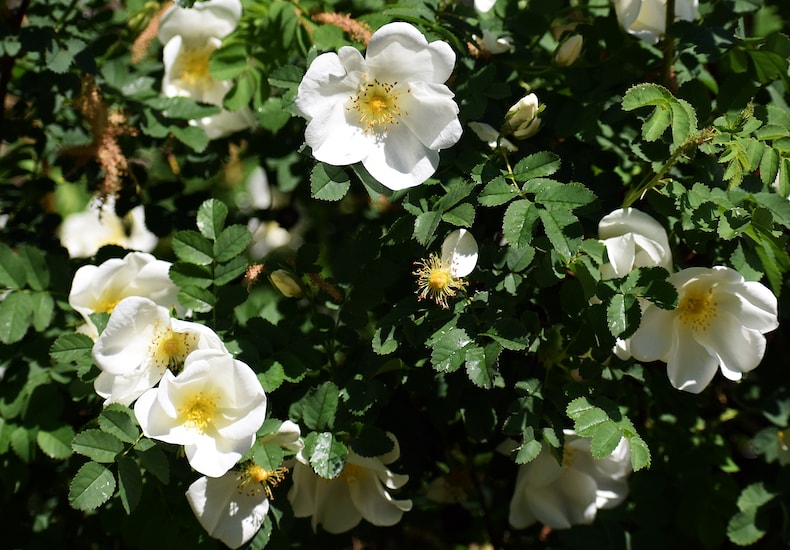
Image: Rosa rugosa ‘Alba’ from Suttons
When your bare root rose arrives, remove it from the packaging straight away and plant in its flowering position. If weather conditions are unsuitable, your plant can be potted up and sheltered in a corner of the garden until things improve.
The best time to plant bare-root roses is from late autumn to early spring, while they are dormant. This is especially true of hedging varieties like Rosa rugosa ‘Alba’ which should be planted from October to April. However, you should avoid the middle of winter when the ground is frozen.
It depends on the variety, but most roses prefer a sunny site with at least half a day’s sunshine. They’re a great choice for clay soil but are happy in any fertile soil with good drainage.
How to plant bare-root roses
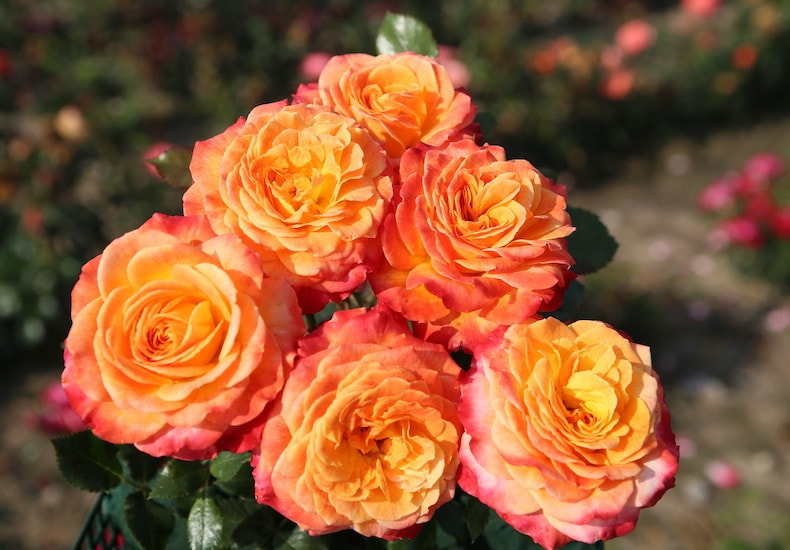
Image: Rose ‘Meteor’ (Floribunda Rose) from Suttons (NEW)
Provided the soil isn’t frozen or waterlogged, you should aim to plant your bare root roses as soon as possible. Here’s how:
- Upon receiving your bare root roses they will need rehydrating. Put them in a bucket of water for a minimum of 2 hours before planting.
- Prepare your soil by removing any stones or weeds.
- Dig a hole wide enough to accommodate the roots and to the depth of a garden spade.
- Fork the base of the hole, add a handful of granular fertiliser, and gently firm with your foot.
- Position the bare root rose in the hole – use a bamboo cane to help judge the final soil level.
- Replace the soil and gently firm in.
- Water the rose and add a mulch of well-rotted compost to help keep it moist.
How to care for your roses
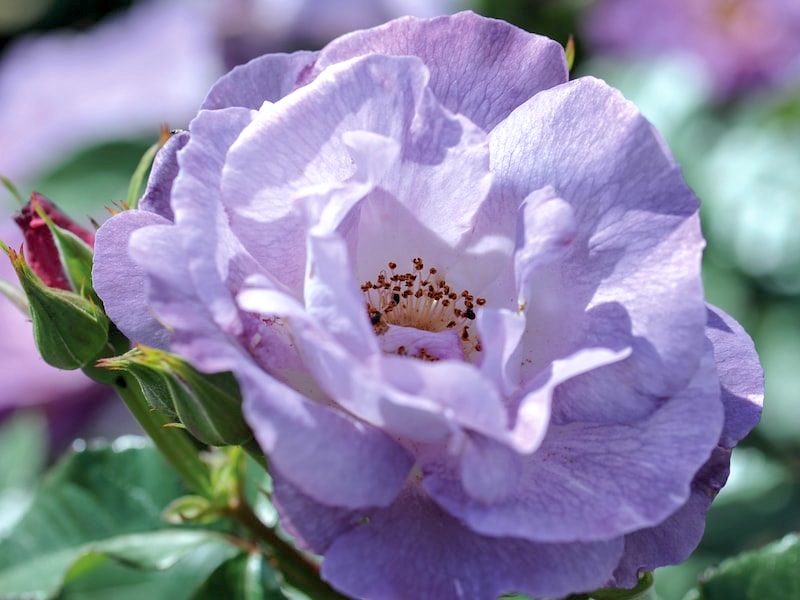
Image: Rose Blue for You (NEW) from Suttons
Roses need feeding regularly with a specialist rose food. Water them in the evening, but avoid wetting the foliage. If you remove any faded blooms, it will encourage your plant to continue flowering for longer. Some roses may also need plant supports and rambling varieties will need a frame or structure to climb over.
Prune your roses in March or before new growth emerges, removing all dead, thin or weak branches and reducing the previous season’s growth by about one third.
Climbing varieties like ‘Scent From Heaven’, don’t require pruning in the first year, except to remove dead, damaged or diseased wood. In the second year, they should be pruned mid-autumn when they’ve finished flowering. Cut any side shoots back by approximately two thirds, or to three or four buds. The main stems can be left alone unless they’re outgrowing their allotted space, in which case they can be trimmed back. If the plant becomes very bare at the base, cut one or two of the main shoots back to about 90cm to encourage growth from lower down the plant.
The best bare-root roses
Here are our top ten bare root roses, including some of our favourite Rose of the Year winners and varieties that hold the RHS Award of Garden Merit.
1. Rose ‘Belle de Jour’
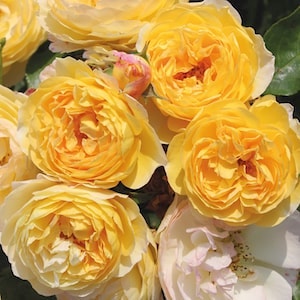
With yellow buds opening to reveal golden flowers, the blooms on ‘Belle de Jour’ can grow up to 7cm across and will fill your garden with a beautiful vanilla-tinged fragrance. Winner of Rose of the Year 2021, this variety has excellent disease resistance and a vigorous, upright habit, gorgeous for cut flowers!
Flowers June-October.
Height 100-150cm; spread 90-100cm.
2. Rose ‘Mum In A Million’

‘Mum In A Million’ is a heavily-scented, renaissance type rose with bright pink petals. Enjoy masses of colour throughout the summer, as this hybrid tea rose looks stunning in a patio pot, planted in a sunny border, or as cut flowers.
Flowers June-September.
Height 90-100cm; spread 50-60cm.
3. Rose ‘Hot Chocolate’
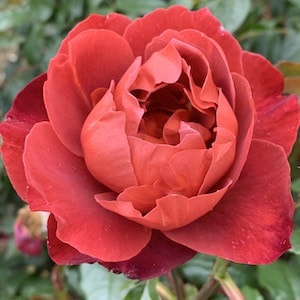
Add a touch of luxury to your borders with rose ‘Hot Chocolate’. With glorious vintage-coloured blooms, this floribunda variety makes a standout statement in sunny borders or containers. Achieving an RHS Award of Garden Merit and the winner of Novelty Rose of the Year 2006, it’s easy to grow and has great disease resistance.
Flowers June-October.
Height 90-100cm; spread 80-90cm.
4. Rose ‘Ebb Tide’
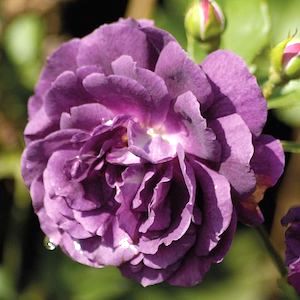
‘Ebb Tide’ is a rose that celebrates the old with the new. A modern variety with antique English blooms, this rose produces a heady scent to rival your favourite perfume and looks gorgeous all summer long. With striking deep plum colouring, ‘Ebb Tide’ also has remarkable disease resistance, making it the perfect addition to mixed borders or patio pots.
Flowers June-August.
Height and spread: 75cm.
5. Rose ‘Queen Elizabeth’
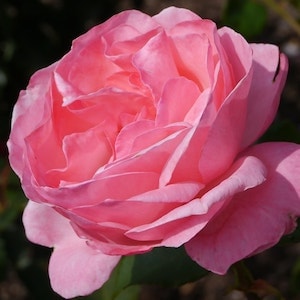
An exquisite floribunda, Rose ‘Queen Elizabeth’ produces a profusion of pink, long-stemmed flowers. With a tall, upright habit, this disease-resistant variety makes a beautiful specimen rose bush or a delightful flowering hedge. The long flowering period ensures a plentiful supply of fragrant cut flowers. .
Flowers June-September.
Height 150cm; spread 75cm.
6. Rose ‘Champagne Moment’

‘Champagne Moment’ scooped Rose of the Year back in 2006 and has remained popular ever since. Clusters of creamy pink buds open to reveal pale blush flowers with a deep apricot centre. Filling your garden with a delicate fragrance, this RHS Award of Garden Merit winner creates a show-stopping display in beds, borders and containers.
Flowers June-October.
Height 100-150cm; spread 80-90cm.
7. Rose ‘Scent From Heaven’
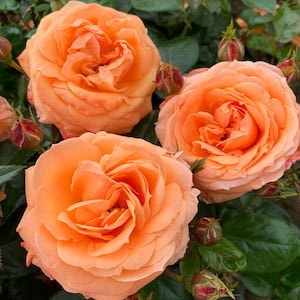
‘Scent From Heaven’ is a wonderful climbing rose with fragrant, rich orange blooms that appear from early summer. Bred by renowned rose breeder, Chris Warner, this is an excellent variety for disease resistance. Grow ‘Scent From Heaven’ over walls, pergolas or fences. Winner of Rose of the Year 2017.
Flowers June-September.
Height 300cm+; spread 200-250cm.
8. Rose ‘Blue for You’
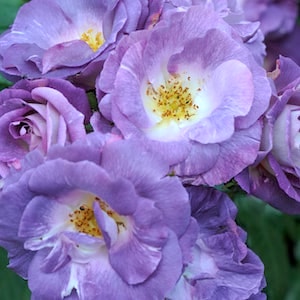
‘Blue for You’ (Floribunda) is a neat, easy to care for rose that looks fantastic in mixed borders. Bearing semi-double, lilac-blue blooms from late spring through summer, it exudes a delicious fruity fragrance and delivers instant kerb appeal.
Flowers May-September.
Height: 80cm; spread: 65cm.
9.Rose ‘Precious Amber’
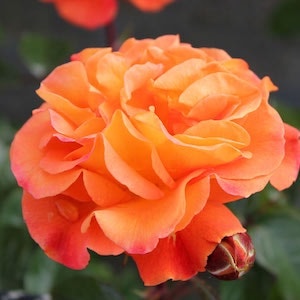
Producing a dazzling array of gold and orange blooms, rose ‘Precious Amber’ is a repeat-flowering floribunda that will quickly become a firm favourite. Ideal for patio pots or filling gaps in beds and borders, this disease-resistant variety will fill your garden with a light fragrance all summer long.
Flowers June-September.
Height 60-70cm; spread 60-70cm.
10. Rose ‘Joie de Vivre’
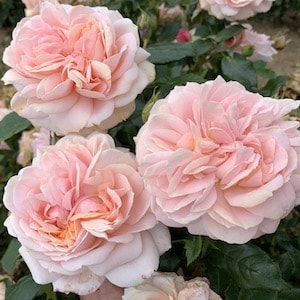
‘Joie de Vivre’ is a small, compact floribunda rose variety that produces clusters of elegant, classically shaped flowers. With stunning apricot-coloured blooms set against dark green foliage, this repeat-flowering rose is perfect for borders and patio pots. Winner of Rose of the Year 2011 and holding a RHS Award of Garden Merit, ‘Joie de Vivre’ has a timeless beauty that looks striking in gardens or vases.
Flowers June-October.
Height 50-60cm; spread 40-50cm.
We hope we’ve inspired you to try some of these beautiful rose plants in your garden. And if you like cut flowers, our Timeless Rose Collection is perfect for the home florist. A garden is not quite the same without a rose!
Lead image: Rose ‘Peter’s Persica’ (Climbing Patio) from Suttons
Last Updated on October 27, 2025 by Suttons Horticultural Team

